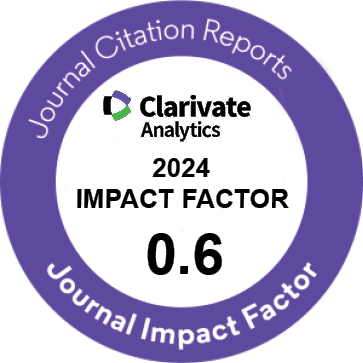| Original Article | |
| Rubella Antibody Avidity Among Rubella Seropositive Women Attending a Tertiary Care Facility in Nigeria | |
| Sherifat Tinuke Suleiman1, Rasheed Bakare2, Aliyu Ajibola Akanbi II1, Adeola Fowotade2, Sikiru Abayomi Billiaminu3, Kabir Adekunle Durowade4 | |
| 1Department of Medical Microbiology and Parasitology, University of Ilorin Teaching Hospital, Ilorin, Nigeria 2Department of Medical Microbiology and Parasitology, University College Hospital, Ibadan, Nigeria 3Department of Chemical Pathology, University of Ilorin Teaching Hospital, Ilorin, Nigeria 4Department of Community Medicine, Federal Medical Centre, Ido-Ekiti, Nigeria |
|
|
IJWHR 2015; 3: 136?141 DOI: 10.15296/ijwhr.2015.29 Viewed : 58923 times Downloaded : 8355 times. Keywords : Antibody avidity, Nigeria, Rubella, Seroepidemiologic studies |
|
| Full Text(PDF) | Related Articles | |
| Abstract | |
Objective: The aim of this study was to determine the seroprevalence of rubella virus antibodies among women of reproductive age group and assess risk factors to rubella infection. Materials and methods: A cross sectional study was carried out among 285 women aged between 15 and 49 years. Enzyme-Linked Immunosorbent Assay (ELISA) method was used to detect and quantify human immunoglobulin G (IgG) antibodies with avidity for rubella virus in sera of participants. Socio-demographic characteristics of the participants, along with recent and previous history of fever and rash among others were obtained using a questionnaire. Statistical analysis was carried out using the program statistical package for social sciences (SPSS) version 16. Results: Seroprevalence of rubella IgG among women of reproductive age in Ilorin was 92.3% (95% CI: 89.2%-95.4%). Thus susceptibility rate to rubella infection was 7.7%. Majority (87.1%) of the IgG seropositive participants had high rubella IgG avidity, implying past rubella infection or re-infections. Seroprevalence was significantly higher among participants from lower educational and socio-economic classes compared with other participants (P=0.035 & 0.023 respectively). There was a negative correlation between age and rubella specific IgG titer (p=0.000). Thus rubella specific IgG titer decreases with increasing age. Conclusion: there is need for vaccination of susceptible women of reproductive age in Ilorin as the rubella susceptibility rate was higher than the 5.0% target set by the World Health Organization (WHO) for prevention of Congenital Rubella Syndrome (CRS). |
Cite By, Google Scholar
Google Scholar
PubMed
Online Submission System
 IJWHR ENDNOTE ® Style
IJWHR ENDNOTE ® Style
 Tutorials
Tutorials
 Publication Charge
Women's Reproductive Health Research Center
About Journal
Publication Charge
Women's Reproductive Health Research Center
About Journal
Aras Part Medical International Press Editor-in-Chief
Arash Khaki
Mertihan Kurdoglu Deputy Editor
Zafer Akan























